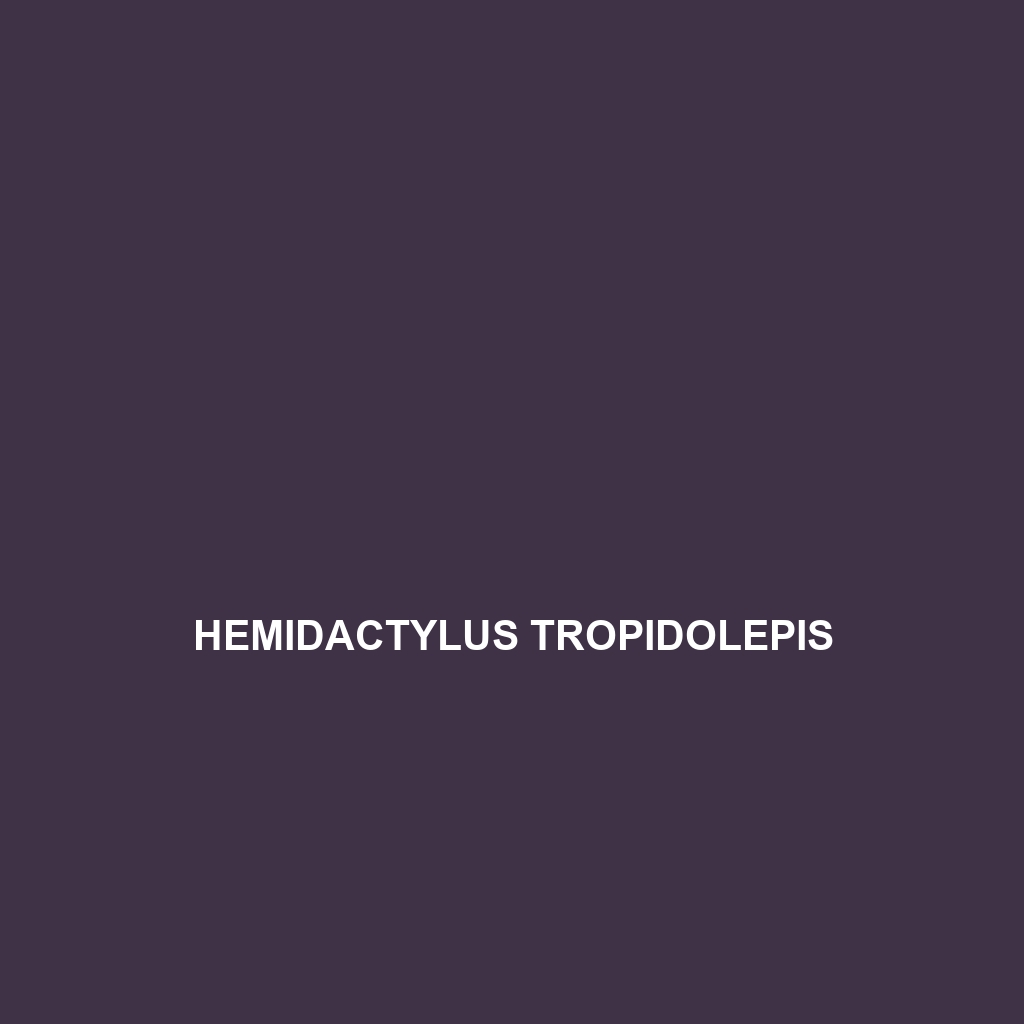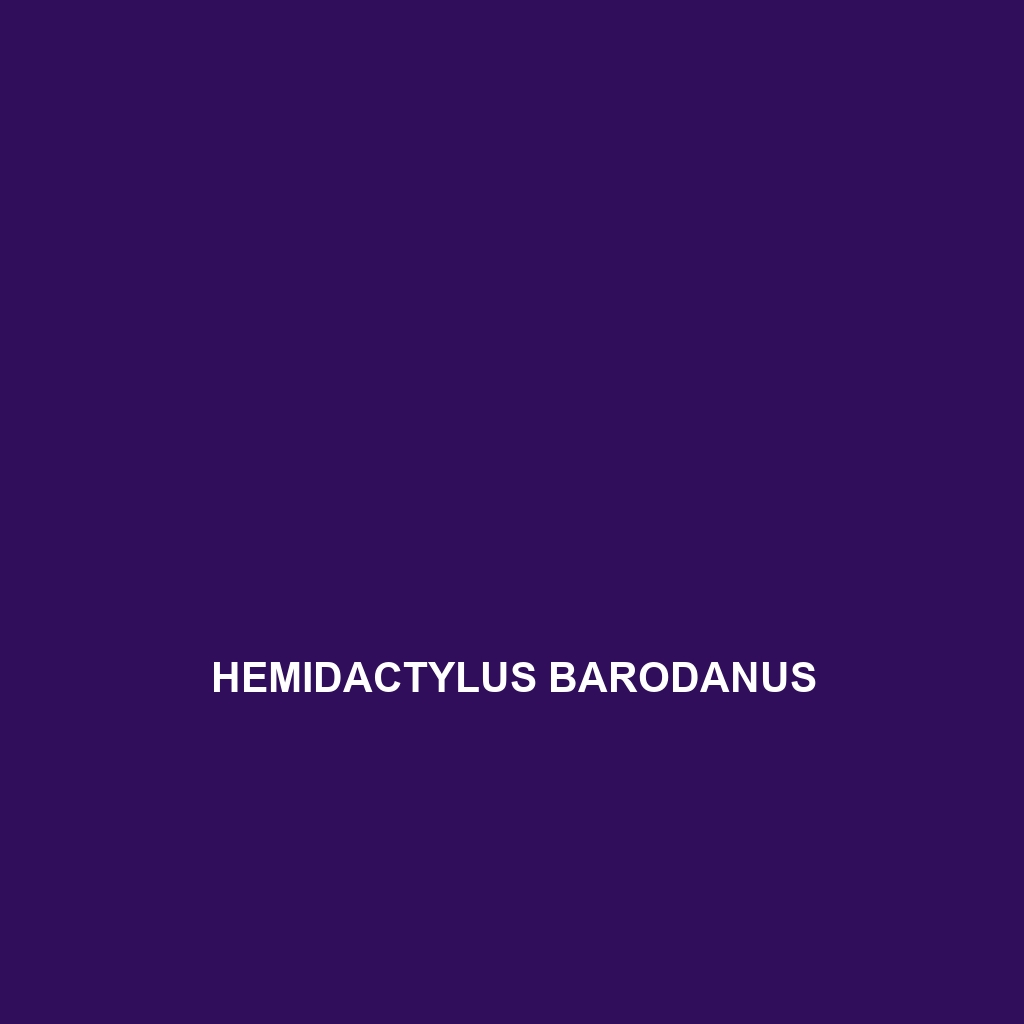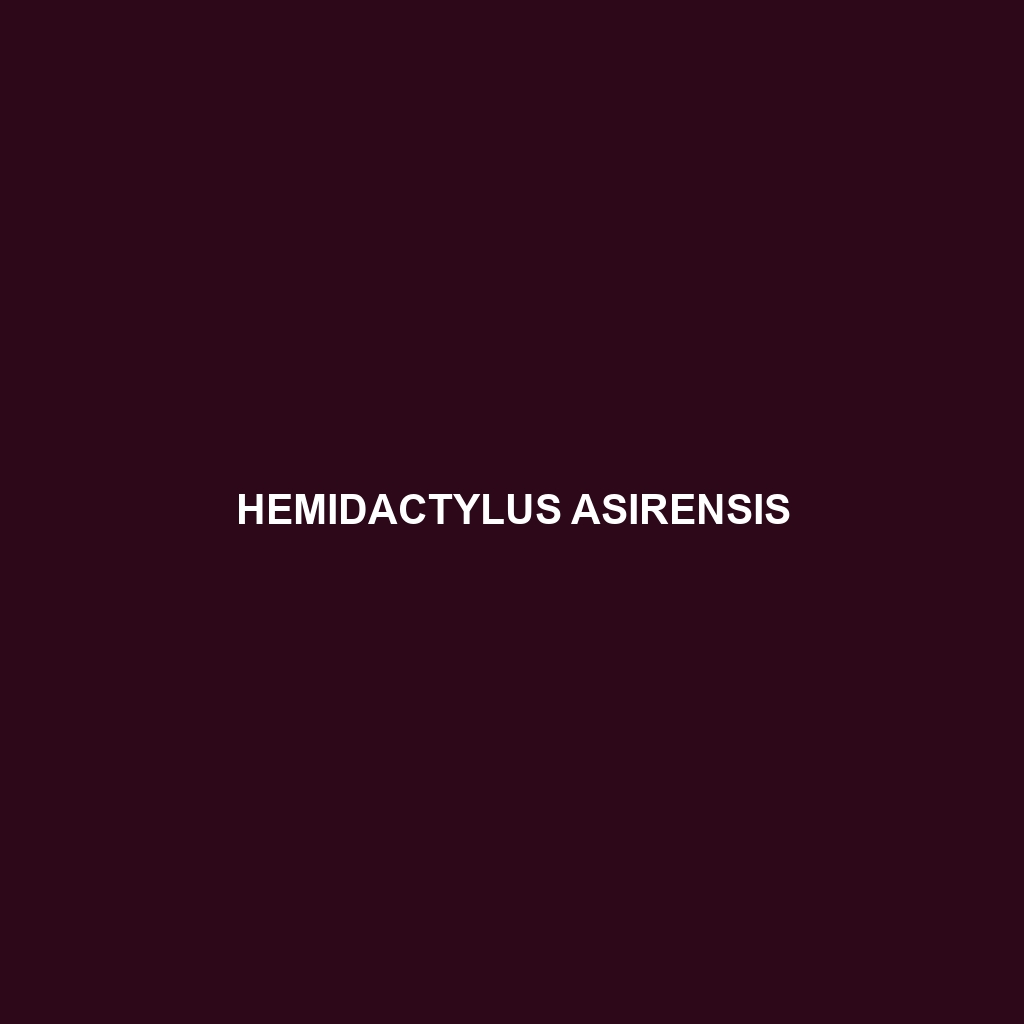Discover the captivating Hemiphyllodactylus houaphanensis, a small, nocturnal gecko from the rainforests of Southeast Asia, featuring a slender body, striking coloration for camouflage, and an insectivorous diet that plays a crucial role in its ecosystem. With its impressive climbing abilities and unique courtship behaviors, this species exemplifies adaptability in its lush habitat.
Tag: physical characteristics of geckos
Hemidactylus xericolus
<b>Hemidactylus xericolus</b>, commonly known as the desert gecko, is an adaptable insectivore found in arid African regions, distinguished by its sandy or grayish coloration and ability to thrive in harsh environments. This nocturnal gecko plays a crucial role in controlling insect populations and exhibits fascinating behaviors, such as tail regeneration and unique climbing abilities.
Hemidactylus tropidolepis
Discover the tropical house gecko (Hemidactylus tropidolepis), a slender, nocturnal insectivore thriving in Southeast Asia's rainforests, savannas, and urban areas. Known for its adhesive toes and distinctive calls, this gecko plays a crucial role in regulating pest populations while showcasing remarkable adaptability and fascinating reproductive behaviors.
Hemidactylus sinaitus
<p>Discover the <b>Hemidactylus sinaitus</b>, or Sinai gecko, a nocturnal reptile native to the eastern Mediterranean, particularly Egypt's Sinai Peninsula. With a slender body measuring 7 to 10 cm, this adaptable gecko thrives in rocky deserts and man-made structures, primarily feeding on insects while playing a crucial role in its ecosystem.</p>
Hemidactylus robustus
Discover the Robust House Gecko (Hemidactylus robustus), a resilient species thriving in tropical and subtropical regions, known for its robust body, distinctive gray or brown coloration, and remarkable ability to regenerate lost toes. This nocturnal insectivore plays a crucial role in maintaining ecological balance by controlling insect populations and adapting effectively to various environments.
Hemidactylus paivae
Experience the remarkable Hemidactylus paivae, a nocturnal gecko found in West Africa's rainforests and savannas, known for its slender body, sticky toe pads, and ability to regenerate its tail. As an insectivore, it plays a vital role in pest control while exhibiting unique social behaviors and intricate mating rituals.
Hemidactylus mabouia
<p>The <b>Mabouya gecko</b> (<i>Hemidactylus mabouia</i>) is a versatile species thriving in tropical and subtropical habitats, characterized by its slender body, large bulging eyes, and nocturnal behavior. As an excellent insectivore, it plays a crucial role in pest control and showcases an impressive ability to adapt to urban environments.</p>
Hemidactylus lavadeserticus
Discover the resilient Hemidactylus lavadeserticus, or desert gecko, known for its agile, slender body reaching 10 to 15 cm in length and its exceptional camouflage in sandy and rocky environments. This nocturnal insectivore plays a vital role in its ecosystem by controlling insect populations while showcasing fascinating behaviors like tail regeneration and territorial displays.
Hemidactylus barodanus
<p>Discover the <b>Hemidactylus barodanus</b>, a fascinating nocturnal gecko from Southeast Asia, measuring 6 to 10 centimeters with distinctive granular skin and vibrant coloration. Thriving in various tropical habitats, this insectivore plays a crucial role in pest control while exhibiting intriguing courtship and territorial behaviors.</p>
Hemidactylus asirensis
Discover the unique Hemidactylus asirensis, or Asir gecko, found in the mountainous regions of southwestern Saudi Arabia. This nocturnal insectivore, measuring 8 to 12 centimeters, is adapted to rocky habitats, exhibiting impressive camouflage and engaging mating rituals.









